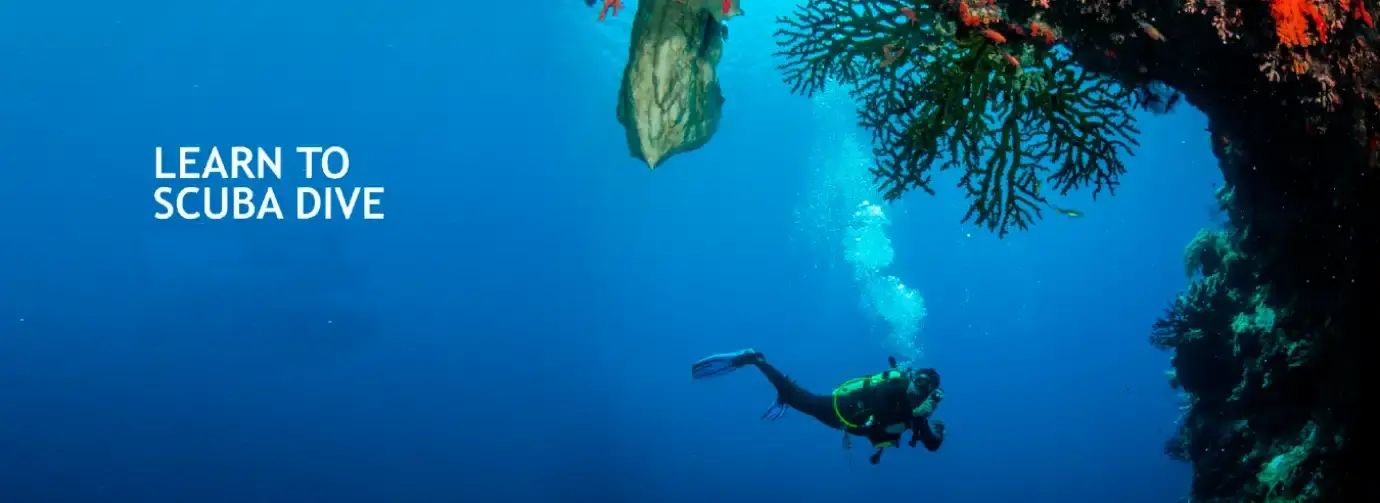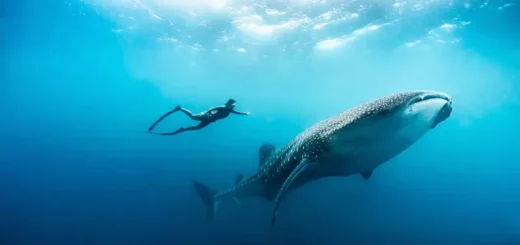Exploring New Zealand’s Unique Marine Life Through Free Diving
New Zealand’s pristine waters are a free diver’s paradise, teeming with unique marine life that captivates both novice and experienced divers alike. As you explore the underwater world, expect to encounter vibrant kelp forests, playful dolphins, and mesmerizing schools of fish. The diverse ecosystems found in places like the Poor Knights Islands and Fiordland offer a stunning backdrop for free diving adventures, making every dive an unforgettable experience. Free diving in New Zealand not only showcases its natural beauty but also emphasizes the importance of sustainable practices to protect these precious habitats.
For those looking to enhance their skills and knowledge, a variety of resources and courses are available. Whether you’re interested in mastering essential techniques or understanding the physiology behind breath-holding, there’s something for everyone. Discover more about how to safely navigate this underwater wonderland by visiting this guide on essential safety protocols for free diving enthusiasts.
Exploring New Zealand’s Coastal Ecosystems
New Zealand, an island nation surrounded by the Pacific and Indian Oceans, boasts a diverse array of coastal ecosystems that are home to an astonishing variety of marine life. From the frigid waters of the sub-Antarctic islands to the temperate zones of the North Island, free divers can experience a range of habitats including kelp forests, coral reefs, and rocky shorelines. Each of these ecosystems supports unique species that are well-adapted to their environments.
Kelp forests, for instance, are particularly prevalent along the South Island’s coasts. These underwater jungles provide shelter and food for a multitude of marine species, making them a prime spot for free diving. Divers can expect to encounter vibrant invertebrates such as sea urchins, nudibranchs, and starfish, as well as fish species like the blue cod and snapper. Coral reefs, while less common in New Zealand, can be found in areas like the Poor Knights Islands, which are known for their clear waters and rich biodiversity.
For an immersive experience, consider joining organized diving trips that cater specifically to free divers, such as those offered by Go Dive. They provide knowledgeable guides who can enhance your understanding of these ecosystems and the marine life that resides within them.
The Majestic Kaikoura Peninsula
Kaikoura Peninsula is one of New Zealand’s premier diving destinations, known for its rich marine biodiversity and unique geological formations. The area is famous for its underwater canyons that attract a variety of marine life, making it an ideal location for free divers looking to explore.
One of the standout experiences for free divers at Kaikoura is the chance to swim with the resident population of New Zealand fur seals. These playful creatures often approach divers out of curiosity, providing memorable encounters. Additionally, the waters are home to a variety of fish species, including the iconic blue moki and the elusive kingfish.
If you’re lucky, you may also spot larger marine mammals such as dolphins and even sperm whales, which frequent the region due to its nutrient-rich waters. For those interested in a guided experience, Go Dive offers tailored tours that include free diving in Kaikoura, ensuring you get the most out of your underwater adventures.
Encountering Unique Invertebrates
New Zealand’s waters are teeming with fascinating invertebrate species that offer free divers a unique opportunity to observe marine life up close. From vibrant sea anemones to elusive octopuses, the diversity of invertebrates is staggering. One particularly remarkable species is the giant Pacific octopus, known for its intelligence and unique ability to change color and texture.
Free divers can also encounter various types of mollusks, including the stunning paua (abalone), which is prized for its iridescent shell. These creatures can often be found in rocky areas where they graze on algae. Other notable invertebrates include the sea cucumber and the diverse array of nudibranchs, which come in a rainbow of colors.
When diving in New Zealand, it’s essential to respect the marine environment. Always observe invertebrates from a distance and avoid touching them, as many species are delicate and can be easily harmed. For those looking to learn more about New Zealand’s invertebrate life, consider joining a guided free diving tour with Go Dive, where expert guides can provide insights into the ecology of these fascinating organisms.
The Rich Biodiversity of the Poor Knights Islands
The Poor Knights Islands, a marine reserve located off the northeastern coast of New Zealand, is a must-visit destination for free divers. Renowned for its stunning underwater landscapes and rich biodiversity, this area offers a unique diving experience that attracts enthusiasts from around the world.
The marine reserve is home to a plethora of species, including the rare black coral and numerous schools of fish. Divers can expect to see everything from brightly colored tropical fish to charismatic stingrays and even the occasional shark. The underwater topography, featuring caves, arches, and walls, adds to the allure of diving here, providing various habitats to explore.
Free divers should take advantage of the clear waters and abundant marine life by participating in guided tours. Go Dive offers excursions to the Poor Knights Islands, allowing divers to experience the reserve’s beauty while learning about its ecological significance. Remember to practice responsible diving by keeping a safe distance from marine life and avoiding any actions that could disturb the delicate ecosystem.
Wildlife Encounters: Dolphins and Whales
New Zealand is famous for its rich marine mammal diversity, making it a prime location for free divers hoping to encounter dolphins and whales in their natural habitat. The country’s waters are frequented by several species of dolphins, including the playful Hector’s dolphin and the larger bottlenose dolphin. These social creatures are often curious and may approach divers, creating unforgettable moments.
Sperm whales are another highlight for marine enthusiasts. Kaikoura is one of the best locations for spotting these majestic creatures, as the underwater canyons provide an ideal feeding ground. For free divers, the experience of swimming alongside these magnificent whales is both exhilarating and humbling.
To enhance your chances of encountering these marine mammals, consider booking a tour with Go Dive, which can guide you to the best spots for dolphin and whale watching. Remember to maintain a respectful distance from these animals and never attempt to touch or chase them, ensuring a safe and enjoyable experience for both divers and marine life.
Conservation Efforts and Sustainable Diving
As more people discover the incredible marine life of New Zealand, the importance of conservation becomes increasingly apparent. Free divers play a crucial role in advocating for sustainable practices that protect these delicate ecosystems. Understanding the impact of human activity on marine life is essential for ensuring its preservation for future generations.
New Zealand has several marine reserves and protected areas that aim to safeguard marine biodiversity. As a free diver, it’s vital to respect these regulations and engage in responsible diving practices. This includes avoiding touching or disturbing marine creatures, not collecting souvenirs from the ocean, and adhering to guidelines established by local authorities.
Educational opportunities abound for divers looking to deepen their understanding of marine conservation. Organizations like Go Dive often offer workshops and training sessions focused on sustainable diving techniques and marine ecology. By participating in these programs, divers can learn how to minimize their impact on the environment while enjoying the underwater beauty of New Zealand.
Preparing for Your Free Diving Adventure
Preparing for a free diving trip in New Zealand involves more than just packing your gear. To make the most of your experience, it’s essential to familiarize yourself with the local conditions, regulations, and safety practices. New Zealand’s waters can vary widely in temperature and visibility, so understanding what to expect is crucial for a successful dive.
Before venturing into the water, ensure that your diving equipment is in good condition. Familiarize yourself with your gear, including your wetsuit, fins, and mask, to ensure a comfortable experience. It’s also wise to check the local weather and sea conditions, as these can change rapidly. Joining a guided tour with experienced instructors, like those offered by Go Dive, can provide additional safety and knowledge, especially for those new to free diving.
Don’t forget to plan for post-dive recovery as well. Hydration and nutrition are vital for maintaining energy levels, so bring snacks and water to replenish after your underwater adventures. With proper preparation and respect for the marine environment, free divers can have an unforgettable experience exploring the unique marine life of New Zealand.
FAQs
What types of marine life can free divers expect to see in New Zealand?
Free divers in New Zealand can encounter a diverse range of marine life, including colorful reefs, schools of fish, sea turtles, dolphins, and even unique species like the Hector’s dolphin and the New Zealand fur seal. The rich biodiversity makes every dive a potential adventure.
Are there specific locations in New Zealand that are best for free diving?
Yes, some of the best locations for free diving in New Zealand include the Poor Knights Islands, Fiordland National Park, and the Bay of Islands. These areas are renowned for their clear waters, abundant marine life, and stunning underwater landscapes.
What is the best time of year for free diving in New Zealand?
The ideal time for free diving in New Zealand varies by region, but generally, the warmer months from late spring to early autumn (November to April) offer the best visibility and water temperatures, making it more comfortable for divers.
Do I need any special training or certification to free dive in New Zealand?
While formal training is not strictly required, it is highly recommended. Taking a free diving course can enhance safety and skills, allowing divers to explore more challenging environments and interact with marine life responsibly.
What safety precautions should free divers take in New Zealand waters?
Safety is paramount when free diving. Divers should always dive with a buddy, be aware of local conditions, practice equalization techniques, and understand the risks associated with marine wildlife. It’s also wise to have a plan for emergencies and to stay within personal limits.
Can I encounter any dangerous marine animals while free diving?
While most marine life in New Zealand is not dangerous, divers should remain cautious around larger species such as sharks or rays. Understanding local wildlife behavior and maintaining a respectful distance can help ensure a safe experience.
What gear do I need for free diving in New Zealand?
Essential gear for free diving includes a wetsuit appropriate for the water temperature, fins, a mask, and a snorkel. Additionally, a weight belt may be necessary for buoyancy control, and safety equipment like a dive float can enhance visibility and safety.
References
- Go Dive New Zealand – A comprehensive resource for divers, offering insights into marine life, dive sites, and experiences unique to New Zealand.
- Department of Conservation – Marine Life – Official information on New Zealand’s diverse marine ecosystems and the species that inhabit them.
- NZ Herald – Underwater Photography – An article showcasing the unique marine life of New Zealand through stunning underwater photography.
- Te Ara – The Encyclopedia of New Zealand – Marine Life – A detailed overview of the various marine species found in New Zealand waters, including their habitats and behaviors.
- Marine Bio – New Zealand – An informative blog that highlights the unique marine biodiversity of New Zealand, focusing on species commonly encountered by divers.


